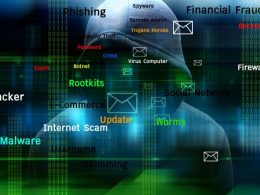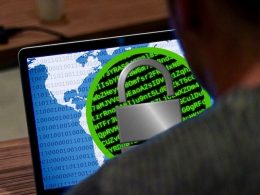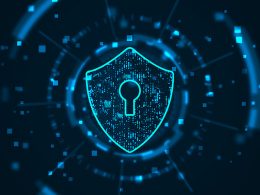Online threats aren’t the only ones you need to be aware of. Although our familiarity with the internet has already made us prone to several security-centric issues, we often tend to ignore the more physical threats that aren’t restricted to the web. Moreover, while internet users resort to VPNs, incognito surfing, and other strategies to protect their digital identity, they fail to gauge the repercussions brought along by not-so-digital worries.
Stealing data, physically, continues to be a major problem, even in 2021. While a majority of hackers use online resources to penetrate into well-guarded systems, quite a few threats or online loopholes come forth as distractions, specifically to weaken the physical guard. Besides, with work-from-home getting a massive boost in 2021 and professional devices being at home for longer than expected, it is a matter of time to invest in potent physical cybersecurity solutions.
Why Online Tools aren’t always enough?
Online security solutions like antiviruses, VPNs, firewalls, and more need to be ascertained with a grain of salt. While these tools have exceptional protective capabilities against online hackers, phishing agents, and other threats, there is a lot more to device-centric risk management that scaling beyond web-centric attacks.
We need to make arrangements for issues related to physical thefts, barge-ins, remote data access, and other problems that require some sort of physical proximity to the affected device. With mobile phone thefts and unwarranted data access being common issues, we need to make provisions for effective physical cybersecurity solutions, which are capable of working in cohesion with the online resources.
Multifactor Authentication for Devices
MFA is probably the commonest physical cybersecurity standard, dedicated to protecting the sanctity of the device. As per this concept, the said device opens or rather grants user access only when two unrelated segments of evidence are fed into the system. While 2FA, one of the many subsets of multi-factor authentication has already been quite a popular gadget-centric inclusion, experts in the post-pandemic era have been rooting for MFA access to further strengthen physical cybersecurity standards.
Then again, the number of defense lines an organization is willing to put up depends on the sensitivity of the information and the costs they are ready to bear.
Hardware Security
Physical cybersecurity should not be limited to corporate devices and must include home-bound entertainment-centric gadgets, as well. Beefing up hardware security makes the most sense for smartphones and notebooks but often concerns streaming devices, voice assistants, and other IoT gadgets.
For instance, if you have an Amazon Fire TV Stick or Stick Lite at home and you plan to jailbreak the same for side-loading third-party apps with ease, you need to be mindful of the hardware security standards. Every gadget, regardless of its usage and functionality, features a certain breed of the hardware module, which keeps it secure. When it comes to select streaming devices like the Fire Stick, you must jailbreak by referring to this blog post from Firesticktricks.com to ensure that physical security standards aren’t tampered with.
Even though no legal and physical constraints show up when you jailbreak select devices, it is always good to keep a VPN installed for striking the perfect balance between online and physical cybersecurity standards.
Similar strategies need to be followed for smartphones and laptops. For example, if you have ever used a MacBook, you would notice that Apple offers the T2 security chip embedded inside the device, precisely to offer secure crypto processors and safeguarded boot-ups and other activities. In the post-pandemic era, we can expect such security standards to show up in every electronic gadget, regardless of its usage.
Besides, a device bolstered by hardware security standards makes more sense to work-from-home professionals, as it keeps the same away from becoming a part of the Shadow IoT network. Then again, if you are still confused as to how the hardware security units look like, you can refer to the SIM card as an example.
Self-Destruct Mode
While MFA and hardware security standards lend on-premise physical security to the devices, they aren’t impactful enough if the gadget is stolen or you are coerced to give out the credentials. In that case, you want a physical cybersecurity plan that can restrict unauthorized or forced device or data access.
Remote deletion of data comes forth as the first solution, allowing companies or individuals to wipe the gadget clean in case it becomes harder to locate or trace the same. While there are quite a few options to activate this physical cybersecurity mode, a single line of code can do the job rather perfectly.
In addition to that, you can also rely on timers to help you self-destruct the data repositories, after a certain period has elapsed. In case you find this concept intriguing, you can already find the same in several messaging applications that allow you to remove the text after a certain time. However, if you are planning to get this as an on-premise solution, it is necessary to be able to control and deactivate the same, if and when necessary.
Lastly, data deleting self-destructing PIN can also be used for setting up remote physical cybersecurity standards. Better termed as Poison PIN, a majority of personal devices pertaining to high-level corporate associates have this on-device provision. Therefore, if and when the gadget itself is sabotaged or the person is forced to unlock the device, the self-destruct code can lock the device, clear the contact list, and even delete applications, as per programmed instructions.
Duress
Personal gadgets and devices do not always respond well to self-destruct modes, as they hardly have the backup to rely on. This is where the Duress Mode comes in as a handy resource. Firstly, instead of deleting the mounting data sets, this physical security metric masks the confidential data, making it unidentifiable.
Secondly, the duress mode is more like a self-activating algorithm that responds perfectly to any unauthorized act of system breach or penetration. In addition to camouflaging the sensitive data with non-sensitive bits, Duress Mode also activates and notifies the data administrator for taking further action.
In 2021 or even going forward, organizations and even personal households need to bring each of these physical security standards together. This approach will minimize on-premise breaches and lend solidarity to the existing online resources like VPNs and firewalls. Inbound and outbound cybersecurity standards working in tandem are probably the best resources for controlling cyberattacks, hacks, and unprecedented data breaches.











